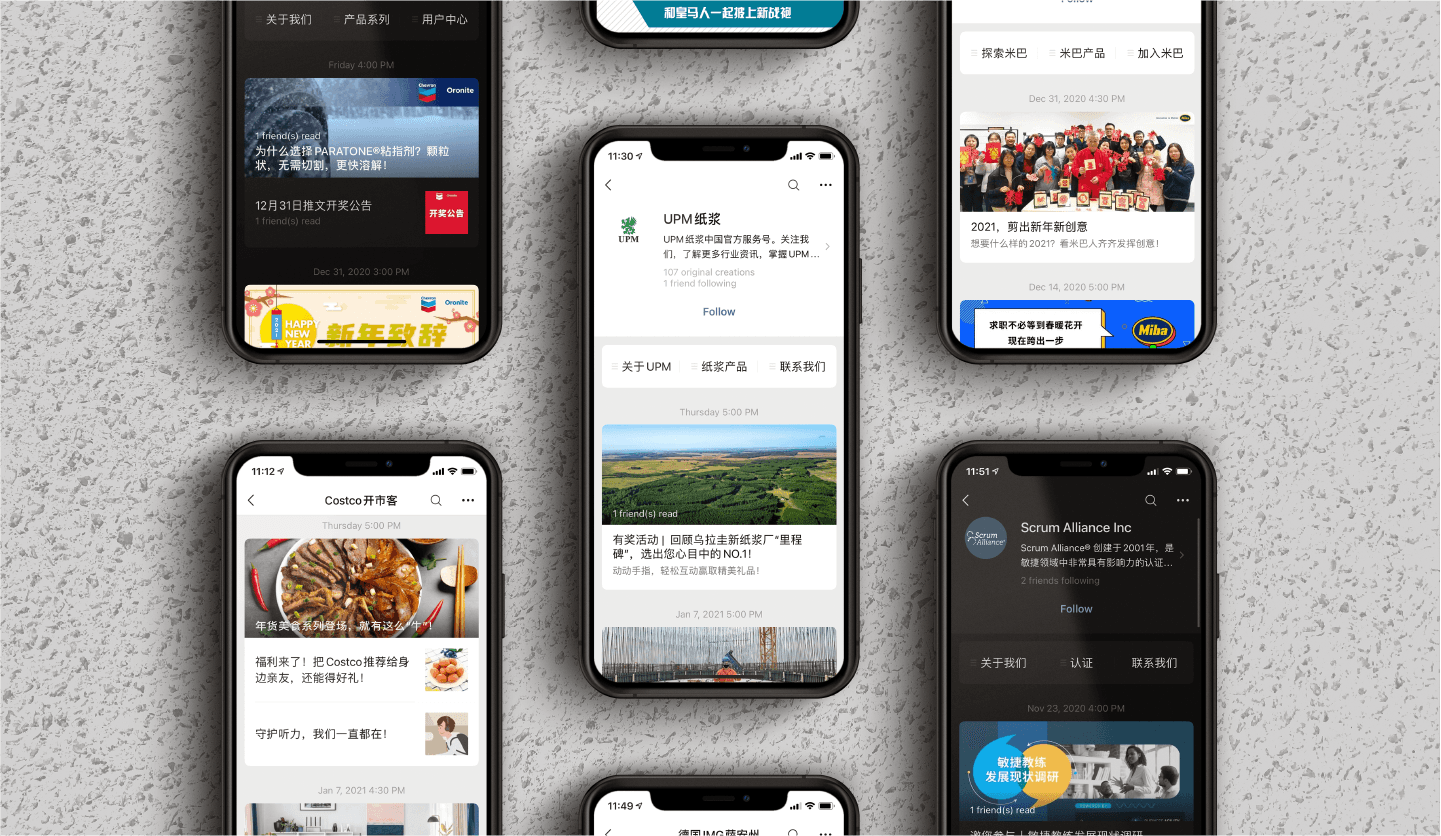What you need to know about using WeChat for B2B – 5 top tips
“WeChat doesn’t work for B2B” was something people used to say a lot, but like those who used to say “the earth is flat”, they’ve been proved wrong.
WeChat is a brilliant tool for B2B. Think about it: B2B is about selling high-value, often niche products or services to customers with a specific need, with many decisions taken on the strength of a brand’s reputation. Creating content that addresses this allows a brand to market directly to potential customers on a device that each person doesn’t let out of sight throughout their waking hours.
At Brandigo, pretty much every enquiry that comes into our Shanghai office has some request to incorporate WeChat into the brief, from helping with content ideas and creation, to opening and running the account.
1. It ain’t all about the numbers: Getting WeChat followers
China has 1.4bn people. Optimistically speaking, only 0.0001% of them are going to have any interest whatsoever in your bio-friendly innovative new alloy coating material for agricultural grain silos. Expecting to get millions of followers ‘just because it’s China’ and it will make an impressive graph on the quarterly report won’t deliver results. You can buy followers, but are they relevant? Better to have a few hundred of the right people (decision-makers who will buy your product), than a few hundred thousand of the wrong ones (everybody else).
2. Leverage what you have: WeChat is not a lead generation tool
The standard offline to online conversion on WeChat is made by scanning a QR code. Some people in the West don’t like these, or think they’re ugly and won’t put them on packaging or marketing collaterals. They are shooting themselves in the foot. Put QR codes EVERYWHERE. All over your brochures, on your trade show booth, on your website, on your product itself. Chinese people will go to scan if they see a QR code.
Likewise, be aware WeChat is a walled garden, and should not be relied upon as a lead generation tool. When people post onto their moments feed, only people they are connected with can see it. This will probably include work contacts and industry peers. Make sure your employees in China are sharing WeChat content (very easy to do) to their feeds and the account contact card (again, very easy) to their professional network.
No idea what moments are? Don’t know how contacts are made? And what’s the difference between a Subscription and Service Account? Download our guide for the answers and a WeChat crash course.

3. Don’t Westernize it: WeChat is more than Facebook & WhatssApp
A lot of Westerners will try and describe Chinese social media in terms they’re familiar with. So, WeChat becomes “the Chinese WhatsApp” and Weibo “the Chinese Twitter”. WeChat is an entirely different beast, with functions that go way beyond what we see on Western social media, but with limitations Europeans or Americans might not be used to.
If your team is not familiar with WeChat, spend time going through the app with everyone, or even better, encourage them to download and use it themselves. This is a great opportunity to show things like H5 and HTML pages, which are tools that can be used to create engaging and interactive posts.
4. Once a week, not every day: Posting frequency on WeChat
Some brands think they have to communicate with their followers on social media every day. This approach might work for Twitter, but for WeChat, your followers may feel they are being spammed. We normally suggest to clients they create a service account, which allows you to publish four times a month. Normally, we’ll do two or three articles each time we publish.
The key here is making sure the content is valuable, engaging, sharable and useful. Better to spend time creating this kind of post, rather than shoveling out low quality every single day. It doesn’t all have to be brand new either. For example, WeChat supports videos, so you could publish video content with Chinese subtitles. If it is interesting and you’ve spent a lot of money creating it, use as widely as possible!
5. Don’t get carried away: Keep your WeChat on-brand
This may seem obvious but we’ve seen it before – a B2B brand looking to spice up their posts with all the glitter and glitz available. Say no to the temptation. There are many third-party platforms that can help you turn your WeChat posts from drab to fab, but make sure you pick a style that matches your website as closely as possible, as your account should link directly to it. You don’t want to confuse followers by having a completely different look and feel. And remember, this is B2B, the audience is not expecting wackiness like they might in the consumer sphere. Work on tailoring your originality and creativity toward something useful and in keeping with your brand tonality.






